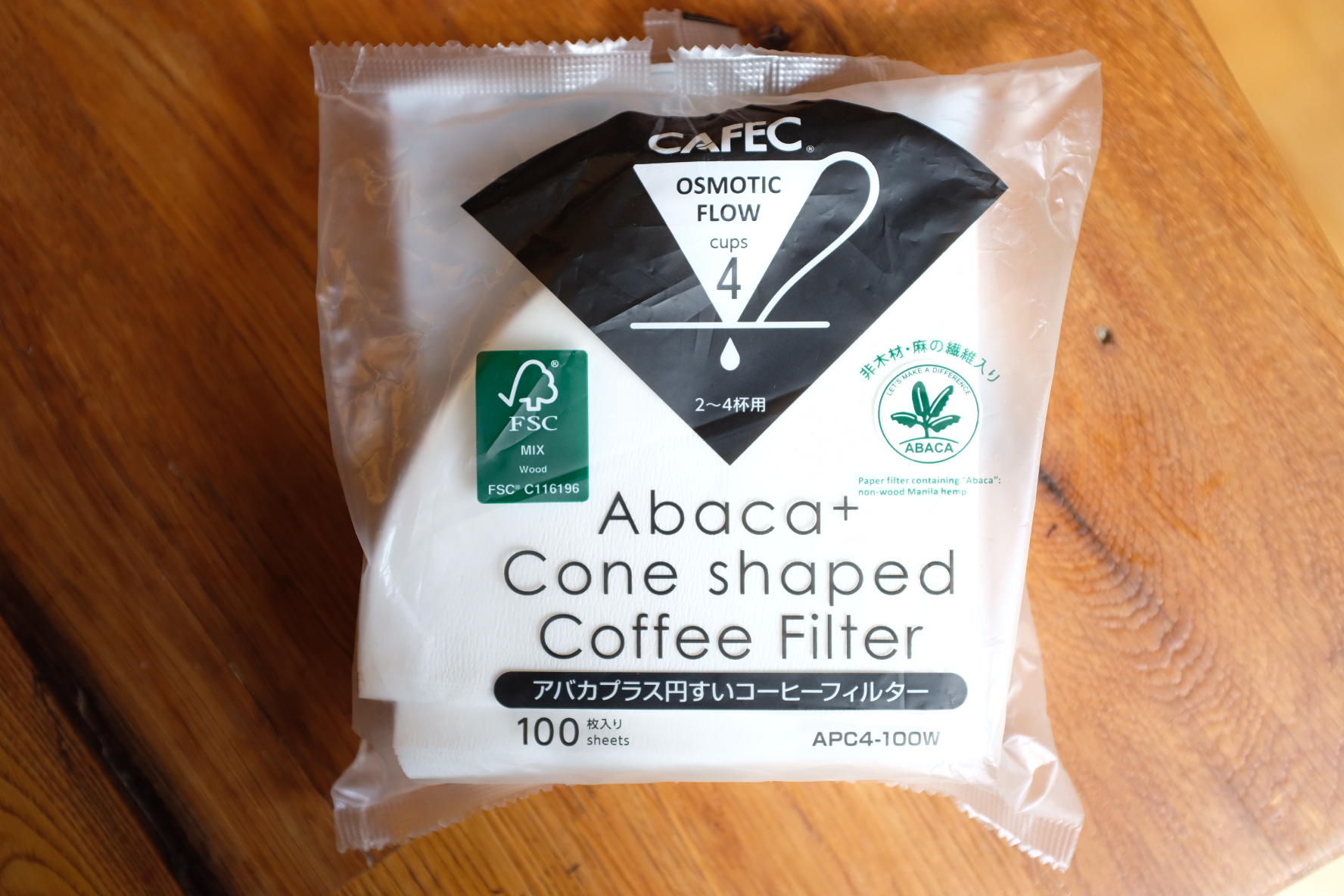It might be the one piece of coffee equipment you’re overlooking: the filter. After all: paper is paper right? You throw it away at the end of the brew.
Well, it turns out that the filter has a big impact on the way your coffee tastes. Not just because of what it filters out or allows through, but also because of the flow rate, which impacts contact time, channeling, and bypass.
As Jonathan Gagne,explains in his seminal book The Physics of Filter Coffee, microscopic pores allow dissolved coffee solids to pass through a paper filter. Over the course of a brew, those pores become clogged with fines– small, dust-like coffee grounds. As each pore becomes clogged, the dissolved coffee must find alternate routes. This is one of the reasons the flow rate of your pour-over will slow down over time. In extreme examples, the brew might choke out entirely.
Enter the Cafec Abaca filter. This filter is made of a blend of both wood pulp (i.e. normal paper) and hemp pulp, which is meant to both improve performance and lessen the environmental impact. The filter is designed to fit Cafec’s own conical brewer, but is also compatible with the Hario V60. The filter features a double-crepe, which Cafec claims will increase the flow rate by creating more surface area– (i.e. alternate routes as the membrane becomes clogged.)

We recently were given a sample of Cafec’s Abaca filters from our friends at Tin Coffee, and decided to test them head-to-head with standard V60 filters, both tabbed and non-tabbed versions.
First Impressions
Out of the package, the Cafec Abaca filters are easily differentiated from a standard paper filter. The filter has almost a cloth-like, silky feel. The crepe is tighter than the standard Japanese-made Hario filter, which Cafec attributes to their proprietary method of drying the paper.
Performance
Because the Abaca filters are meant to have a faster flow, we decided to test two brews: one with our typical V60 grind, and one that was slightly finer to compensate for the faster flow.
Not surprisingly, the almost universally hated, Dutch-made tabbed Hario filter performed worst in our trial. The paper has almost no crepe and easily clogs, leading to long brew times.
What was surprising, however, was that a non-tabbed Japenese-made Hario filter proved to have a much faster flow rate than the Cafec Abaca filter. Consistently, the Hario filter was 30 seconds faster given the same coffee, grind size, and recipe. It would appear that the tighter crepe on the Cafec Abaca filter decreases the flow rate compared to the looser, thicker Japanese-made Hario filter.
We did find, however, that the Cafec Abaca filter offered brews with excellent sweetness and a syrupy mouthfeel. Although the flow was slower than the Japanese-made Hario filter, the results were always within standard recommendations for contact time. No issues with clogging or choking.

Conclusion
In the end, I believe the Cafec Abaca filters offer a unique brewing experience. Although I can’t prove it, the syrupy, coating mouthfeel of the brews leads me to believe the use of hemp pulp might allow more oils to pass into the brew. The flow is not as fast as advertised but certainly offers a better brewing experience compared with the newer, tabbed Hario V60 filters.
